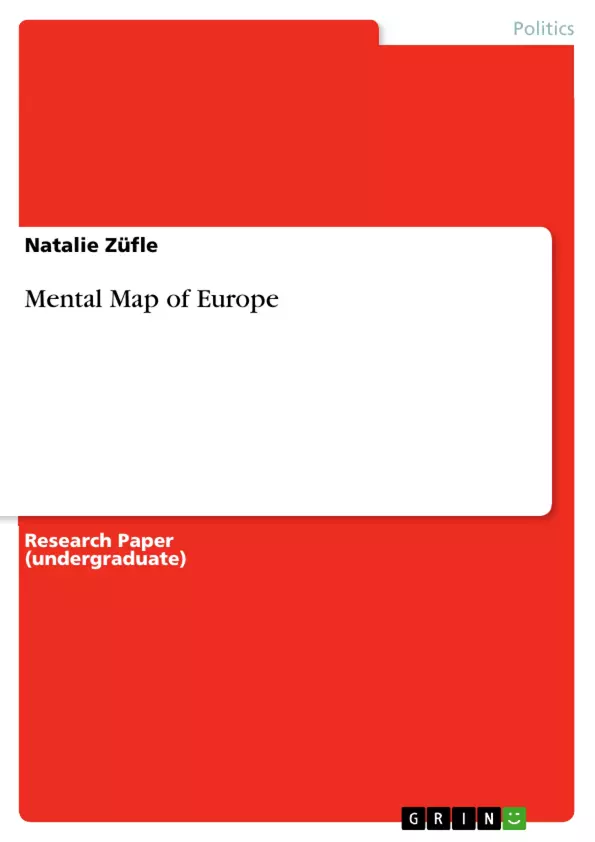Many different “Europes” exist at the same time. The term "Europe" has multiple uses. Last but not least, a lot of factors come together and intertwine: common religion, culture in terms of a shared history, political tradition etc. Depending on the perspective, special concepts of Europe are applied with all their positive or negative side effects.
Inhaltsverzeichnis (Table of Contents)
- Europes
- The Council of Europe
- The European Football Champions League
- The European Grand Prix de la Chanson
- The Roman Empire
- Geographical Europe
- OSCE
- EU in 2003
- EU in 2007
- EU in 20??
Zielsetzung und Themenschwerpunkte (Objectives and Key Themes)
This text aims to explore the multifaceted and evolving concept of "Europe," analyzing various definitions and perspectives that contribute to a diverse understanding of European identity. It examines how different criteria, including geography, security, economy, culture, religion, and politics, shape the inclusion and exclusion of entities within the European framework. The text highlights the complex interplay of these factors and their implications for the European Union, particularly in terms of potential enlargement. Here are some key themes explored in the text:- The ambiguity and plurality of the term "Europe"
- Criteria for inclusion and exclusion within different European conceptions
- The influence of geographic, political, economic, cultural, and religious factors on European identity
- The potential consequences of a narrow or broader definition of Europe for the European Union's membership
- The role of different disciplines, such as economics, political science, and sociology, in shaping perspectives on European integration
Zusammenfassung der Kapitel (Chapter Summaries)
The text begins by presenting a table outlining various definitions of "Europe," highlighting the diverse and often overlapping nature of the concept. It then delves into Walker's applicative mental maps of Europe, focusing on six key categories: security, economy, culture, religion, geography, and politics. The chapter then discusses the complexity of defining Europe based on geographical boundaries, illustrating how "Europe" extends beyond a clear-cut border and encompasses a vast region with diverse cultural and political landscapes. It also highlights the varying definitions of "Europe" within different security organizations like NATO and OSCE, further emphasizing the fluidity of the concept. The text concludes by discussing the consequences of a narrower versus broader definition of Europe, examining the potential impacts on diversity, mutual respect, and stability within the European context. It also highlights the challenges associated with managing diverse interests and ensuring transparency within a potentially expanded European Union.Schlüsselwörter (Keywords)
The text focuses on the concept of "Europe" and its various interpretations, including geographical, political, economic, cultural, and religious perspectives. Key themes explored are inclusion, exclusion, criteria for membership, diversity, stability, and the influence of different disciplines in shaping perspectives on European integration.
Excerpt out of 5 pages
- scroll top
- Quote paper
- Natalie Züfle (Author), 2008, Mental Map of Europe, Munich, GRIN Verlag, https://www.grin.com/document/180056
Look inside the ebook



